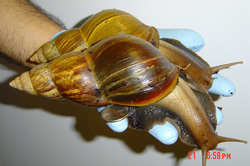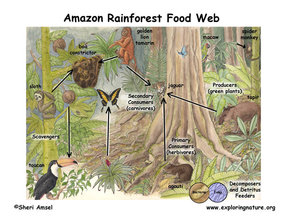Unit 4: Biomes & Climate (a little bit)
Ecology

http://www.npr.org/2011/09/17/140540662/miami-invaded-by-giant-house-eating-snails
|
Goals: Community Ecology
| ||||||||||||||||||||||||||||||||||||
Unit 2: Natural Selection, Biodiversity, & Population Ecology
Readings:
Expanding the Limits of Life
What does a newborn island look like?
Videos
Introduction to Evolution & Natural Selection
Natural Selection & the owl Butterfly
Wolves in Yellowstone Park
Goals: Natural Selection
Readings:
Expanding the Limits of Life
What does a newborn island look like?
Videos
Introduction to Evolution & Natural Selection
Natural Selection & the owl Butterfly
Wolves in Yellowstone Park
Goals: Natural Selection
- Explain and evaluate several hypothesis that explain the origins of life
- Describe what the fossil record has shown scientists
- Explain the process of natural selection
- Cite evidence for natural selection
- Compare allopatric and sympatric speciation
- Describe the three major types of selection (directional, stabilizing, & disruptive)
- Contrast background extinction rates with periods of mass extinction
- Discuss reasons for species extinction and mass extinction events
- Identify the mass extinction events that have occurred on Earth
- List the levels of ecological organization
- Outline the characteristics of populations that help predict population growth
- Compare logistical and exponential growth
- Explain how limiting factors and carrying capacity impact population growth
- Describe types of survivorship
- Use the growth rate formula to determine a population's growth rate
- Compare K-selected species to R-selected species, give examples and characteristics of each group
- Compare density-independent and density-dependent limiting factors
- Define the term biodiversity
- Describe the ways that evolution influences biodiversity
- Explain the Theory of Island Bioggeography
- Characterize the scope of biodiversity on Earth (species, genetic, and ecosystem)
- Evaluate the primary causes of biodiversity loss
- Describe the major benefits of biodiversity (be sure to know specific examples of each)
- Describe the field of conservation biology
- Chi Square Statistical Analysis
- Determine Population Density
- Quadrant Sampling with a Transect

